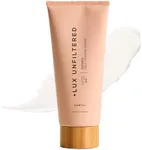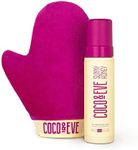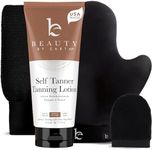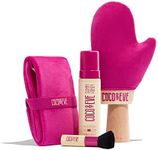Buying Guide for the Best Self Tanners
Choosing the best self-tanner for you means finding a product that matches your skin tone, your application skills, and your desired level of tan. With so many options available, it can seem overwhelming, but focusing on a few key features will help you make a smart choice. Think about how natural you want your tan to look, how much time you have to apply and maintain it, and how comfortable you feel with different formulations, such as mousse, lotion, or spray. Remember, everyone's skin is different, so a product that works for one person may not work for another.Formulation TypeThe formulation type refers to the texture and delivery method of the self-tanner. Common options are lotions, mousses, sprays, drops, and towelettes. Lotions are often hydrating and easy to spread, making them suitable for beginners, while mousses absorb quickly and are good if you want faster results. Sprays offer even coverage for hard-to-reach areas, drops can be mixed into moisturizer for a subtle effect, and towelettes provide convenience with minimal mess. Think about how comfortable you are applying each format and how much time you have—you may prefer a lotion if you're new to tanning, or a mousse or spray if you're more experienced and want a faster process.
Color Depth (Shade Options)Color depth means how dark your tan will look after application. Self-tanners usually come in options like light, medium, and dark, and it’s important because you want a natural look that matches your undertone and starting skin color. If you have pale skin or are new to self-tanning, choose a lighter shade to avoid streaks or unnatural results. For medium or olive skin, a medium or dark option might suit you better for a noticeable but still realistic tan. Always consider starting with a lighter tan and building the color gradually.
Drying Time and Development TimeDrying time is how quickly the self-tanner sets on your skin, while development time is how long it takes the color to reach its peak after application. Fast-drying formulas let you get dressed sooner and are good if you're short on time or want to avoid mess. Some tanners require a few hours to develop (overnight tanners), while others offer instant or express versions that work in 1–3 hours. If you need a tan quickly for a last-minute event, look for express products, but for a more gradual, controllable tan, traditional formulas are a good choice.
Longevity and FadingLongevity is how many days the tan will last, and how it fades over time matters for maintaining a natural look. Some self-tanners last only a few days, while others can stay visible for up to a week or more. The way a tan fades—whether it peels, patches, or gradually lightens—is important for avoiding uneven coloring. If you want low maintenance, look for products that promise even fading and longer-lasting results. If you don’t mind reapplying every few days, a shorter-lasting option may be fine.
Skin-Friendly IngredientsSince self-tanners interact with your skin, their ingredients matter—especially if you have sensitivities. Some are formulated with moisturizing agents, vitamins, or are free from common irritants like parabens and fragrances. These are important if you have dry, sensitive, or allergy-prone skin. If your skin is sensitive or you want added skincare benefits, seek out products that highlight hydrating or gentle ingredients. Always consider patch testing on a small area first to see how your skin reacts before applying all over.
Application and Guiding ColorGuiding color means some self-tanners have a visible tint when you apply them, helping you to see where you’ve already put product and avoid streaks or missed spots. Clear formulas don’t show color as you apply, which can be trickier for beginners but may avoid staining clothes or sheets. If you’re new to self-tanning or want a foolproof application, go for a self-tanner with a visible guide color. If you are experienced or want to avoid rub-off, a clear formula might be best.























